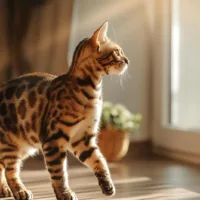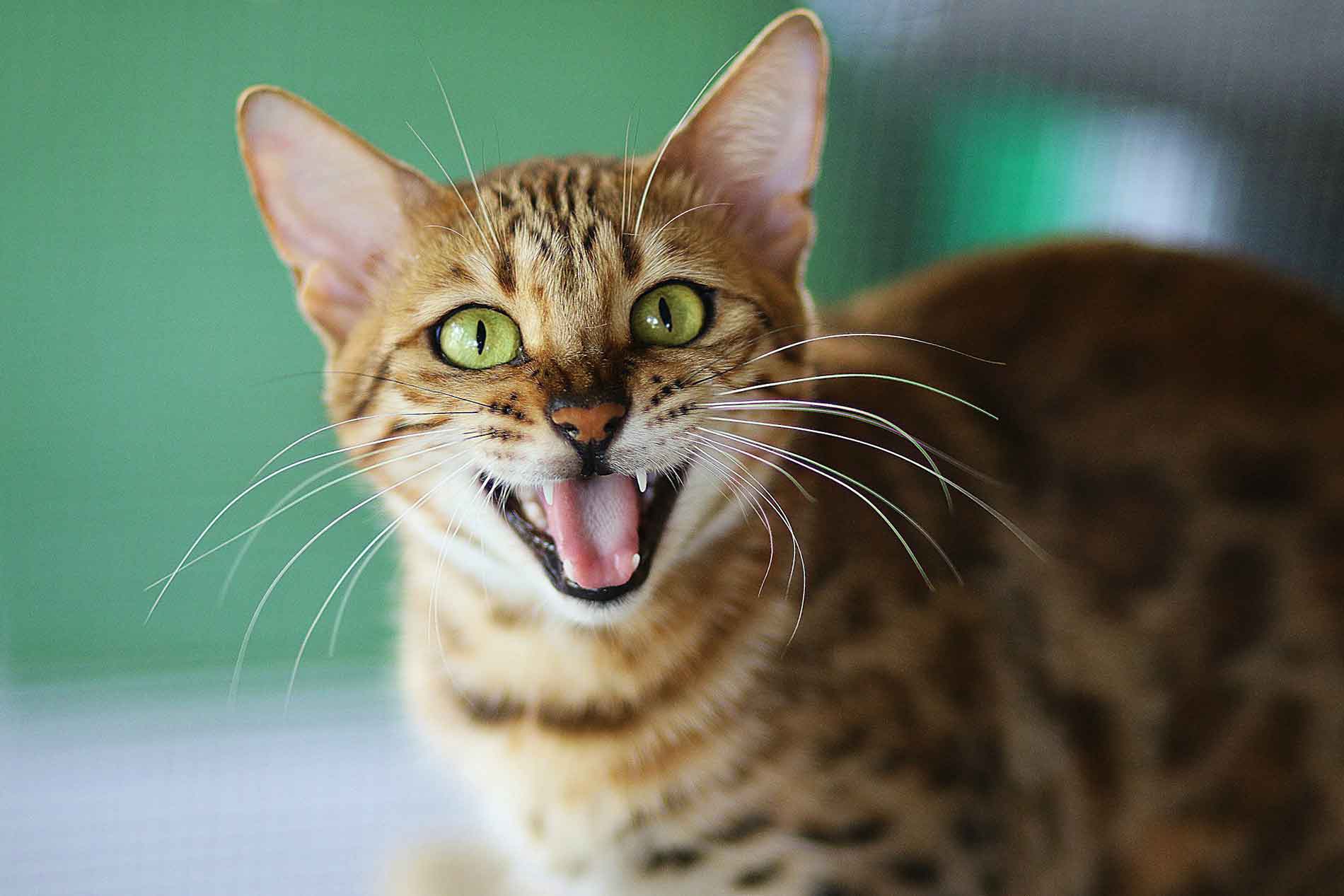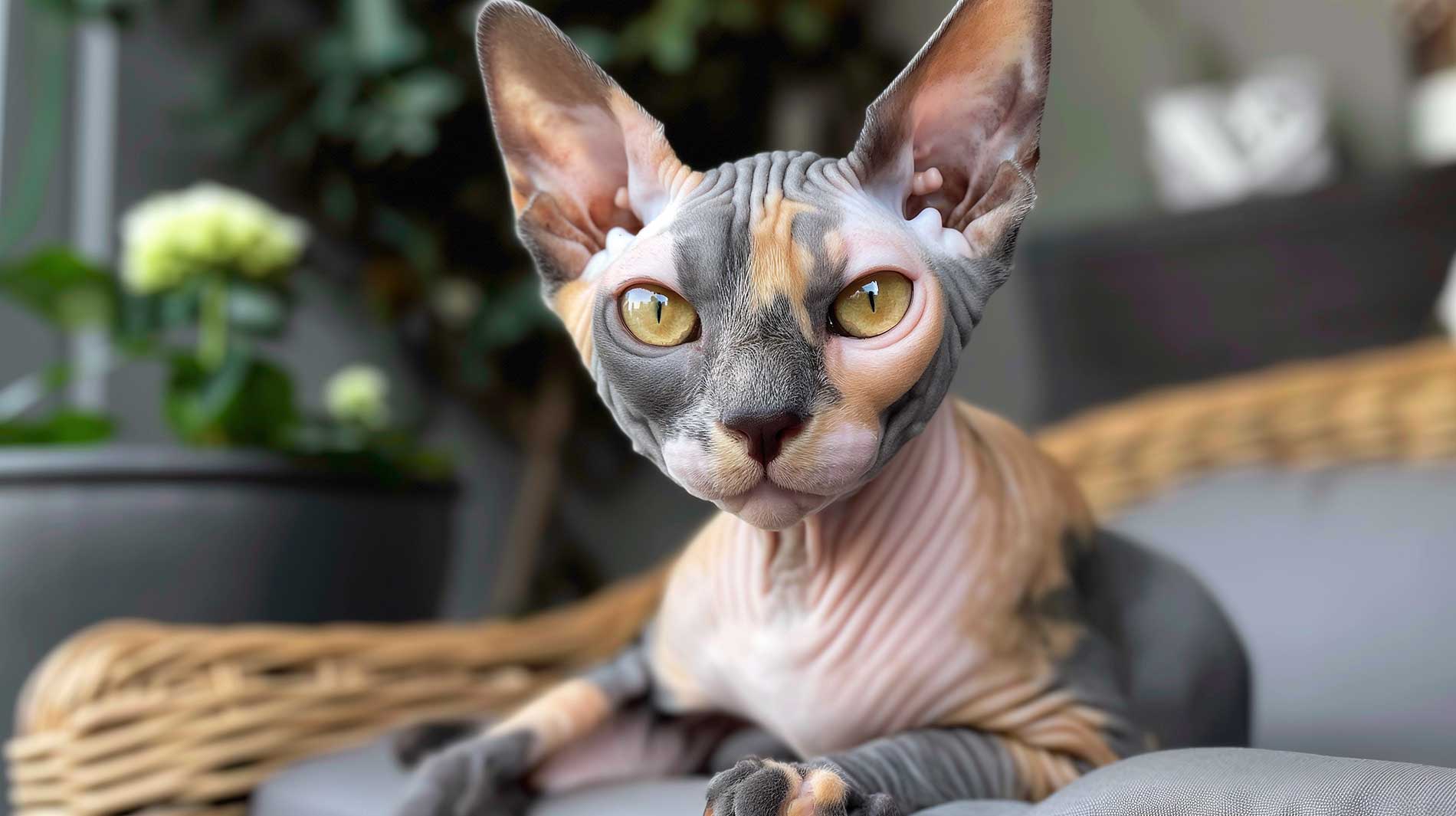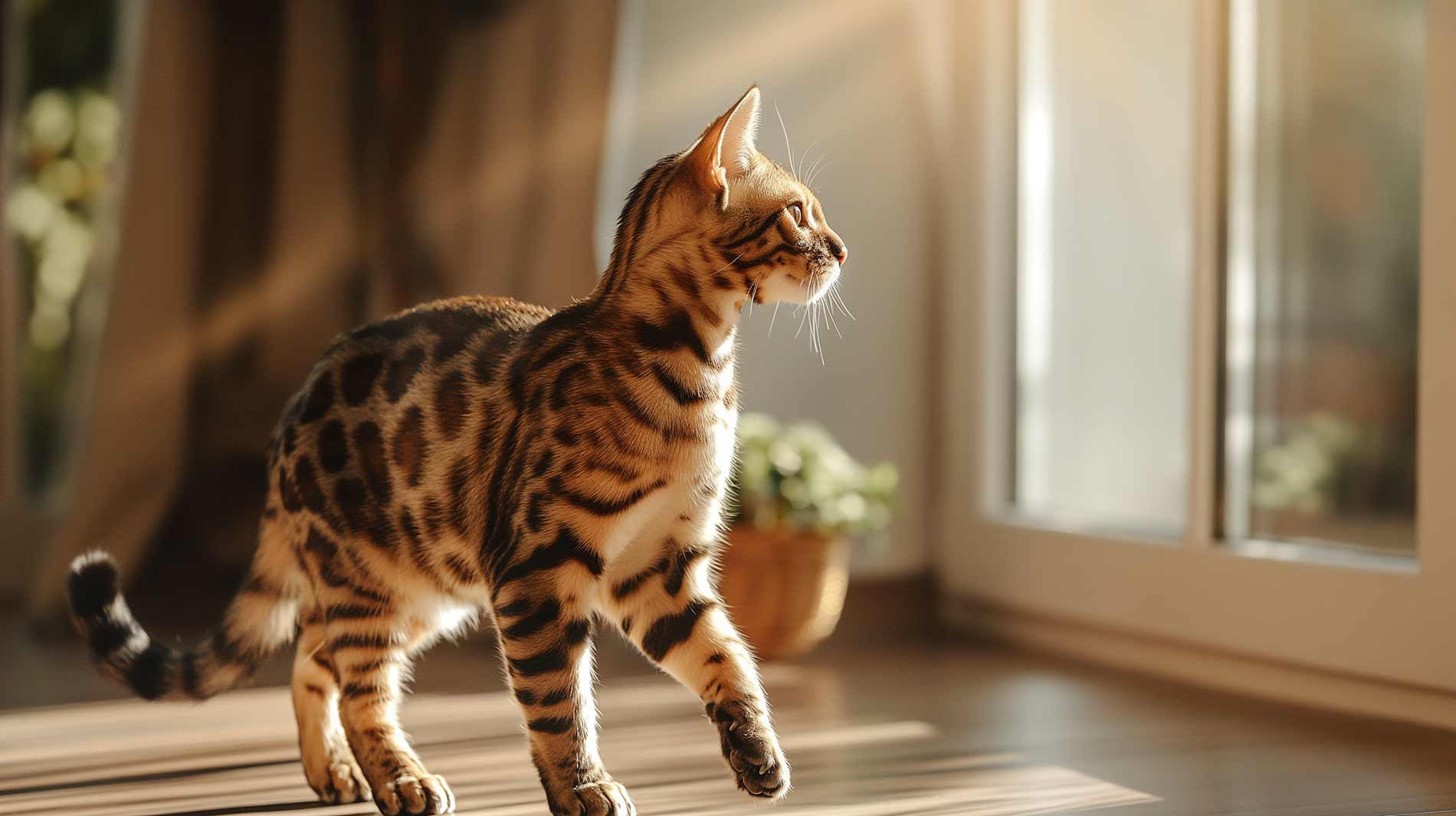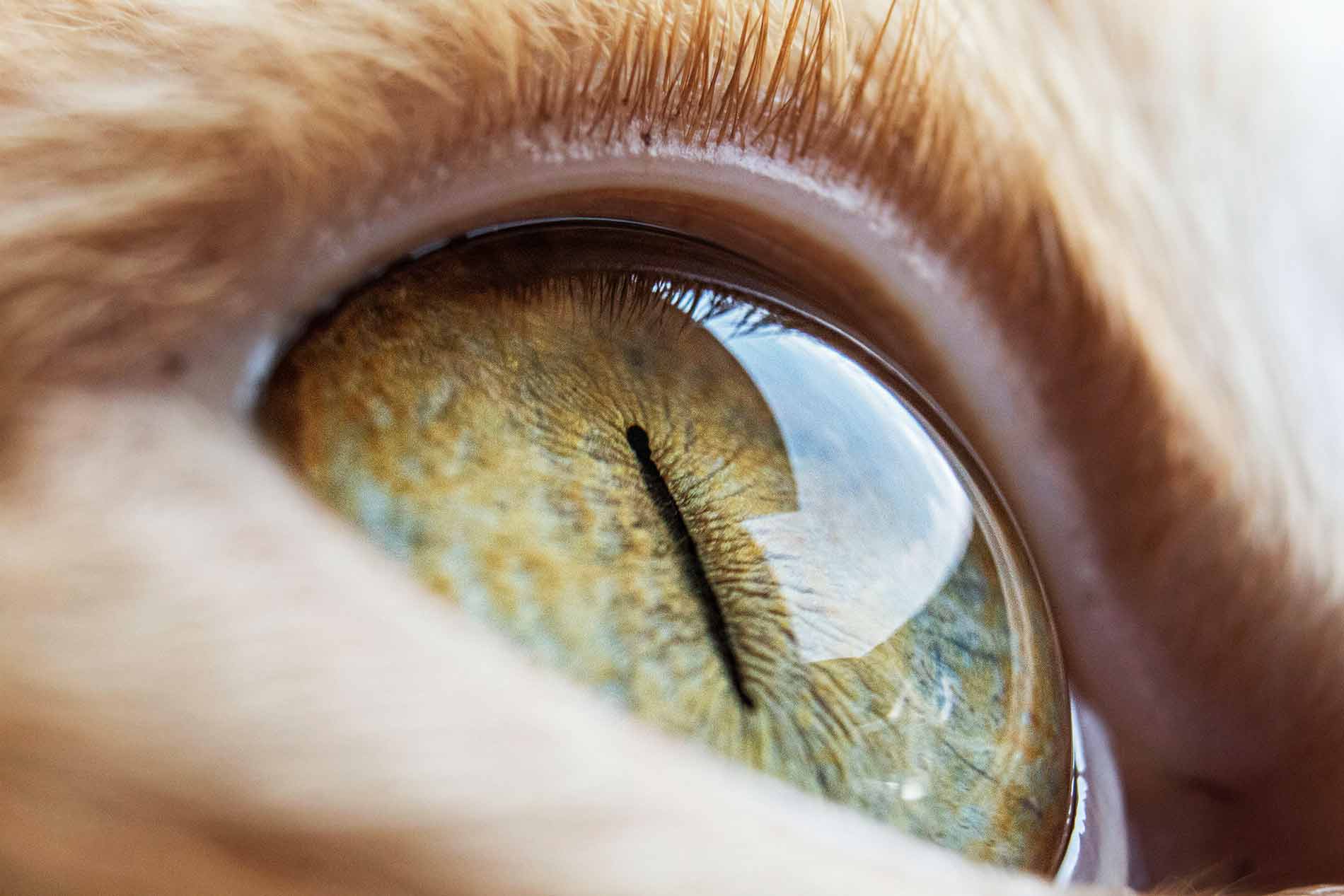Many cat owners diligently attend to their pet’s diet, grooming, and playtime, yet often overlook dental health. We tell you everything you need to know about your cat’s teeth, selecting the right dental care products and recognizing signs of dental issues. This guide is designed to help both new and experienced cat owners.
We’ll provide practical tips for easy integration into your daily routine, ensuring your cat’s dental health is maintained with ease and confidence. Join us as we delve into the essentials of feline dental care, and learn how to keep your cat’s smile bright and healthy!
How to prepare cat dental care
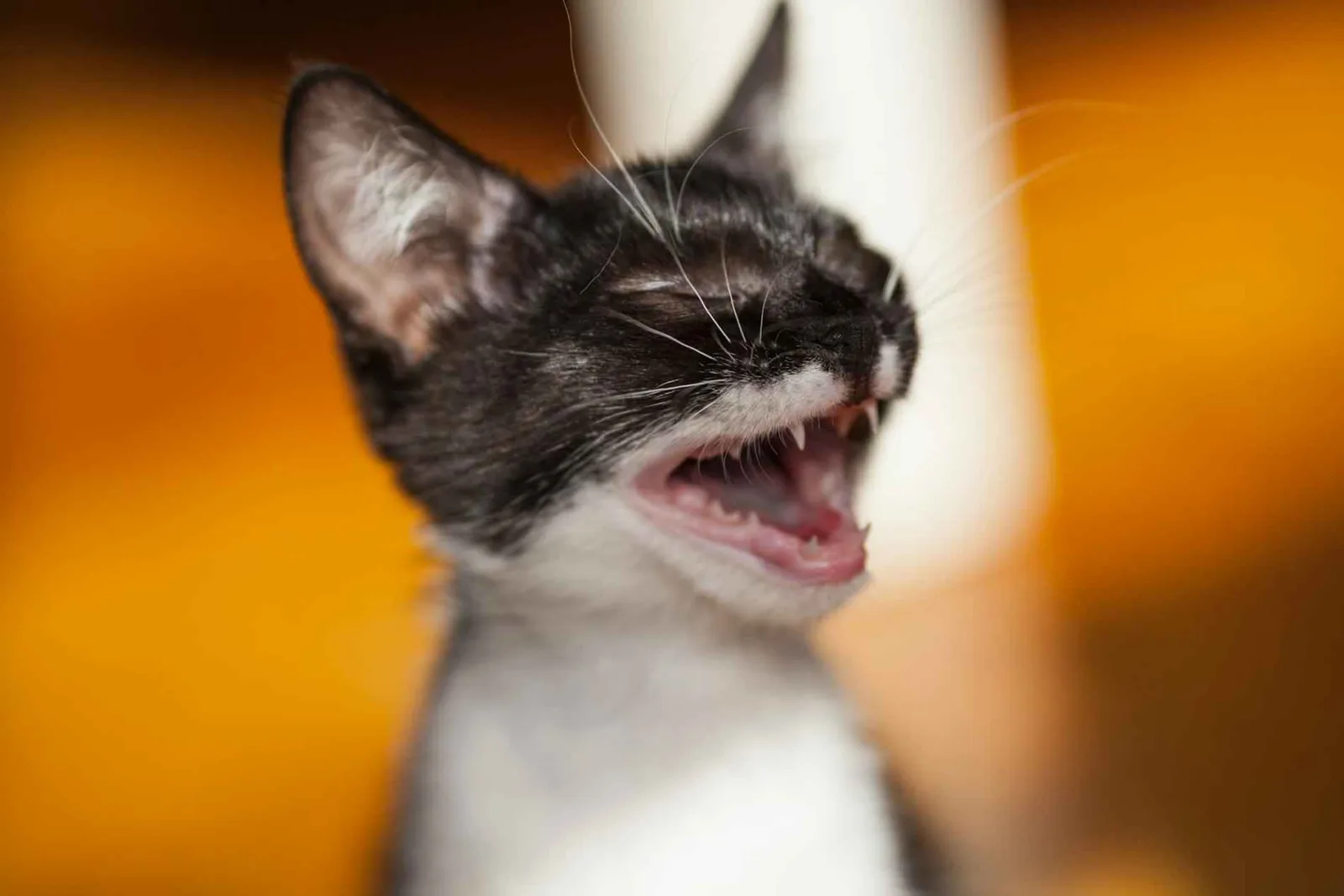
Importance of starting early.
Introducing dental care routines early in your cat’s life has numerous benefits:
- Ease of adaptation: Young cats adapt more easily to new routines, including teeth cleaning.
- Reduced stress: Familiarity with dental care from a young age means less stress during each cleaning session.
- Smoother vet visits: Cats accustomed to having their mouth touched are more cooperative during oral examinations at the vet.
- Avoiding anesthesia: Regular dental checks can be easier and may not require anesthesia, as your cat is more willing to let the vet do their job.
- Long-term oral health: Early care prevents plaque and tartar buildup, leading to better dental health over your cat’s lifetime.
Selecting the right dental care products.
Choose the right tools for effective and safe dental care:
- Toothbrushes: Opt for cat-specific toothbrushes with smaller heads and softer bristles. Finger brushes can also be a good alternative.
- Toothpaste: Always use cat-formulated toothpaste. They’re available in flavors like poultry or fish to make brushing more appealing.
- Dental wipes: Useful for cats resistant to brushing due to added flavor; helps in plaque removal and gum health.
- Dental treats and diets: Unfortunately, there is little evidence about treats or kibble helping to clean cats’ teeth. Apparently, a diet with wet food may help to prevent bacteria associated with oral diseases from building up, though.1
Introduce these products gradually, ensuring your cat gets comfortable with the dental care routine.
Learn how to brush your cat’s teeth
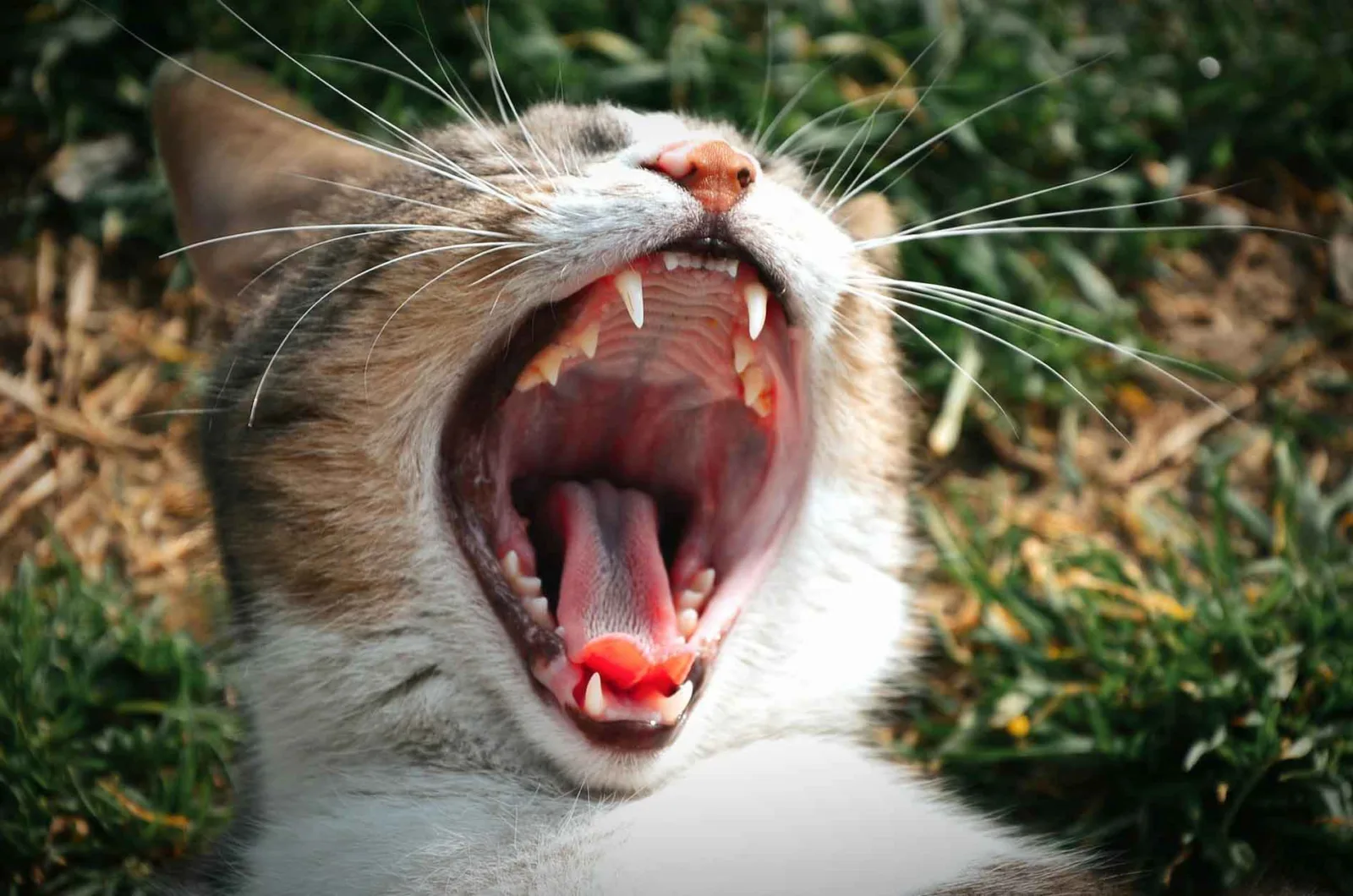
Brushing your cat’s teeth might seem daunting, but with patience and the right technique, it can become a manageable part of your routine.
Here’s a step-by-step guide to help you master the art of brushing your cat’s teeth:
- Creating a calm environment:
- Choose a quiet, comfortable space where your cat feels secure.
- Pick a time when your cat is relaxed, perhaps after a meal.
- Gently pet and soothe your cat to help her feel at ease.
- Introducing the toothbrush and toothpaste:
- Let your cat sniff and explore the toothbrush and toothpaste to get familiar with them.
- You can apply a small amount of toothpaste on your finger for her to lick off, so she gets used to the taste.
- This step should be where you end your very first session. Next time you can try the following steps.
- Gently opening your cat’s mouth:
- Approach your cat from the side rather than head-on, which can be less intimidating.
- Gently lift her lips to expose the teeth, using as light pressure as possible.
- If she resists, don’t force it. Give her a treat and try again later or a day after, ensuring the experience remains neutral.
- Repeat this step in multiple sessions until your kitty is comfortable with it. Only then proceed to step 4.
- Brushing technique:
- Start with a few teeth at a time, gradually increasing as she gets more comfortable.
- Use circular motions, focusing on the gum line where plaque tends to accumulate.
- Be gentle to avoid gum irritation.
- Ensuring safety and comfort:
- Never use human toothpaste, as it can be harmful to cats.
- If using a finger brush, be mindful of your cat’s comfort level with your finger in her mouth.
- Stop immediately if your cat shows any signs of distress such as folded ears, grumbling or tail movements.
- Post-brushing reward:
- Always end the session with a positive note, like a treat or her favorite playtime.
- This helps associate tooth brushing with a pleasant experience.
Remember, patience is key when it comes to your cat’s health.
It might take several sessions for your cat to get used to this new routine. Gradually, as she becomes more comfortable, you’ll be able to brush more teeth and for longer periods. Making her feel relaxed and safe should be your priority here.
Dental health without brushing
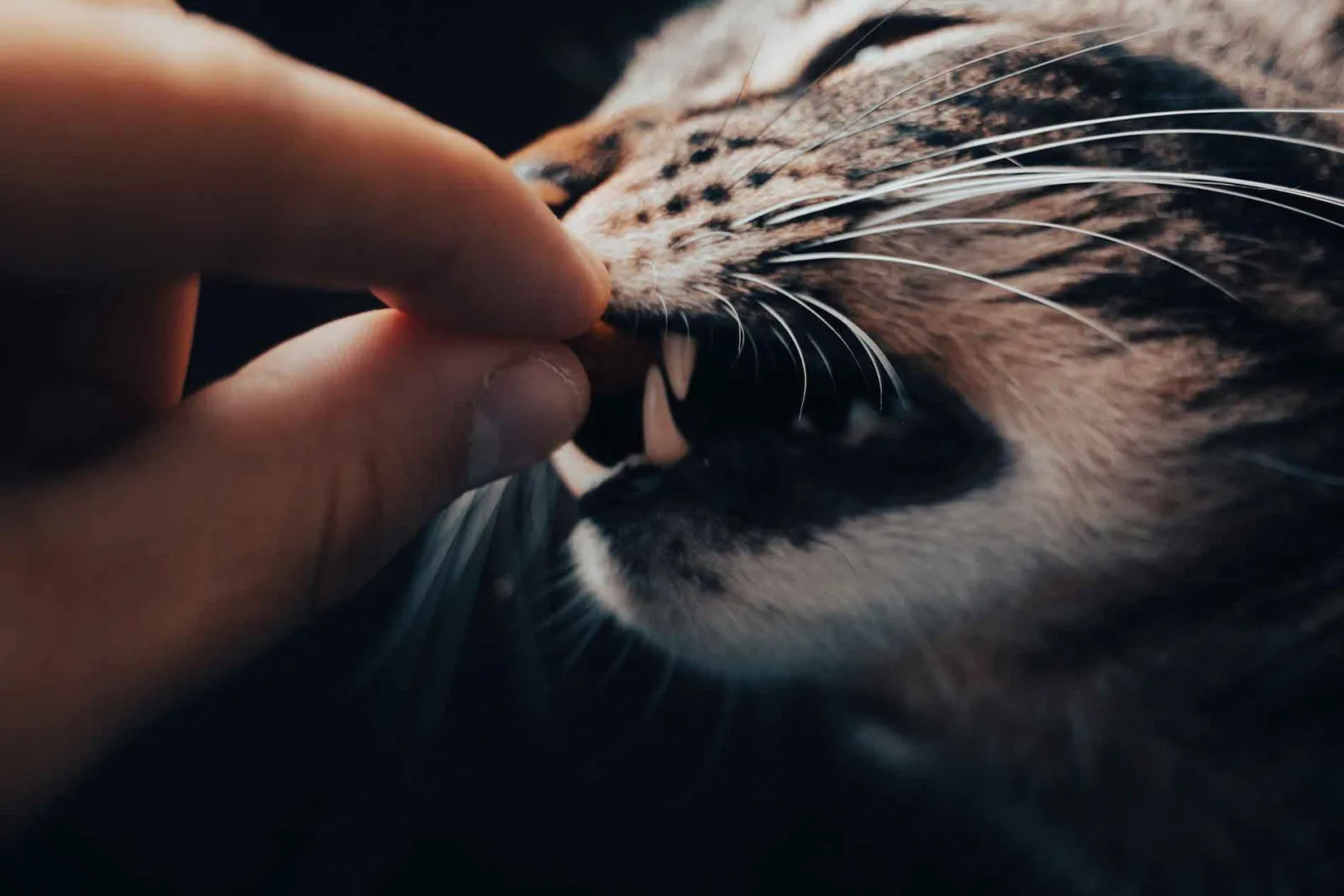
Dietary choices beneficial for healthy teeth
Food with fillet pieces: Feeding your cat food that includes fillet pieces can be beneficial. The abrasive texture of the fillets can help clean the teeth to some extent as your cat chews.
Wet food for overall health: Wet food is often recommended as the preferred diet for cats due to its high moisture content, which is crucial for maintaining overall health. Cats naturally have a low thirst drive and may not drink enough water if fed only dry food. Wet food helps ensure they stay hydrated, which is essential for kidney and urinary tract health. Additionally, it’s generally easier to digest and can be particularly beneficial for cats with certain health conditions.
Same goes for water: It’s important to encourage drinking by providing multiple water sources. Consider using cat water fountains, as many cats prefer fresh, running water. Strategically placing water bowls in various quiet, accessible spots around your home can also help increase her water intake.
Water additives for dental health
Plaque-reducing solutions: While there is some skepticism about their effectiveness, you can consider adding these solutions to drinking water. They are designed to reduce bacteria with chlorhexidine or zinc and therefore freshen breath. Always use products specifically formulated for cats, and if in doubt consult your veterinarian to make sure they’re okay to use.
Toys and accessories for dental care
- Dental toys and chew toys: Toys designed for dental health can encourage chewing, which helps massage the gums and may remove some soft tartar. Ensure these toys are made from safe, non-toxic materials that cannot be torn apart.
- Interactive play: Regular playtime promotes overall health, which is beneficial for maintaining healthy teeth and gums.
Spotting dental health issues
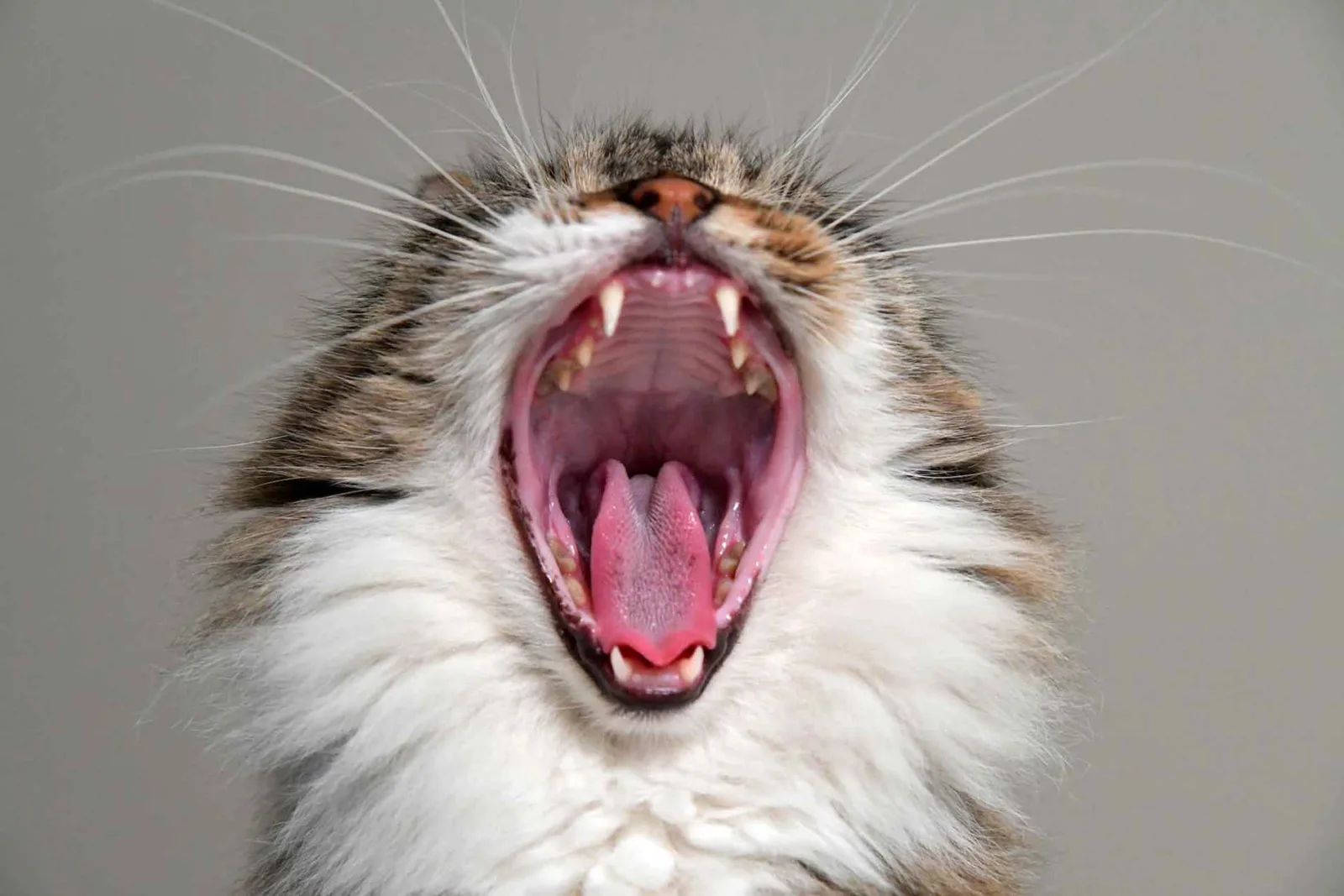
Common dental ailments in cats
Noticing any of the following symptoms is a sign you should take your cat to the vet for a dental checkup.
- Bad breath: While a cat’s breath isn’t expected to smell minty fresh, excessively foul breath can indicate dental issues.
- Red or swollen gums: This can be a sign of gingivitis (inflammation of the gums).
- Difficulty eating or loss of appetite: If your cat seems hesitant to eat, chews only on one side, or has suddenly lost her appetite, it could be due to dental pain.
- Pawing at the mouth: This behavior may suggest discomfort or pain in the mouth area.
- Drooling: Excessive drooling, especially if the saliva is tinged with blood, is a sign of oral discomfort.
- Visible tartar on teeth: Brown or yellow buildup on the teeth is a sign of tartar accumulation, which can lead to more serious dental conditions.
- Changes in behavior: Reduced playfulness or increased irritability can also indicate dental discomfort and warrant a vet visit.
Preventive care
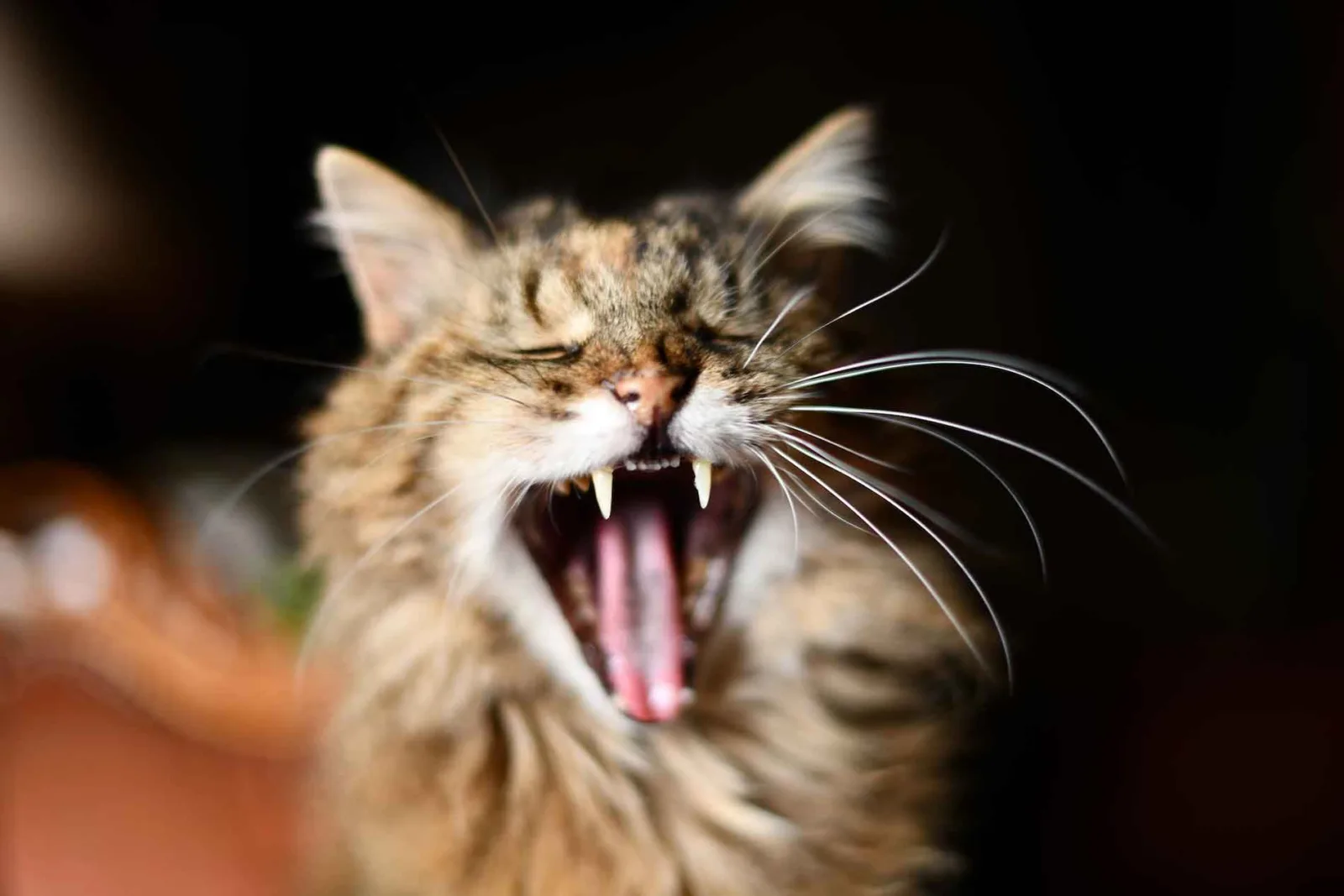
Regular veterinary check-ups
- Proactive Approach: Don’t wait for symptoms to appear. Regular veterinary visits, along with home care, are key to preventing dental ailments and ensuring your cat’s long-term oral health.
- Examinations: Schedule them ideally every 6 to 12 months, even if no dental issues are apparent. These visits can catch early signs of dental problems and ensure timely treatment.
The role of professional dental cleanings
- What happens during a cleaning: Professional cleanings are performed under anesthesia to allow a thorough examination and cleaning of the teeth and gums. This process includes removing tartar and plaque, polishing teeth, and checking for any signs of dental disease.
- Key benefit: These cleanings can prevent the progression of periodontal disease, and can identify issues that might not be visible to the naked eye.
Preparing for a vet visit
- Familiarization: Gradually get your cat accustomed to the carrier and car rides if they aren’t already. If you need to start with basic training, you can take a look at our guide here.
- Comfort items: Bring along a favorite blanket or toy to provide the comfort of a known smell in the unfamiliar environment of the vet’s office.
- Calm approach: Maintain a calm demeanor, as cats can pick up on their owner’s anxiety.
- Informative discussion: Be prepared to discuss your cat’s eating habits, behavior, and any concerns you’ve noticed with your vet.
By integrating these preventive care strategies, you play a vital role in maintaining your cat’s dental health and overall well-being.
Since cats often hide discomfort, providing proper care when they need it is challenging. By staying vigilant with brushing, recognizing subtle signs of dental issues, and maintaining regular vet visits, we can safeguard our furbabys’ health, ensuring they remain pain-free and content. If you know someone who could benefit from this article, feel free to share it with them!

